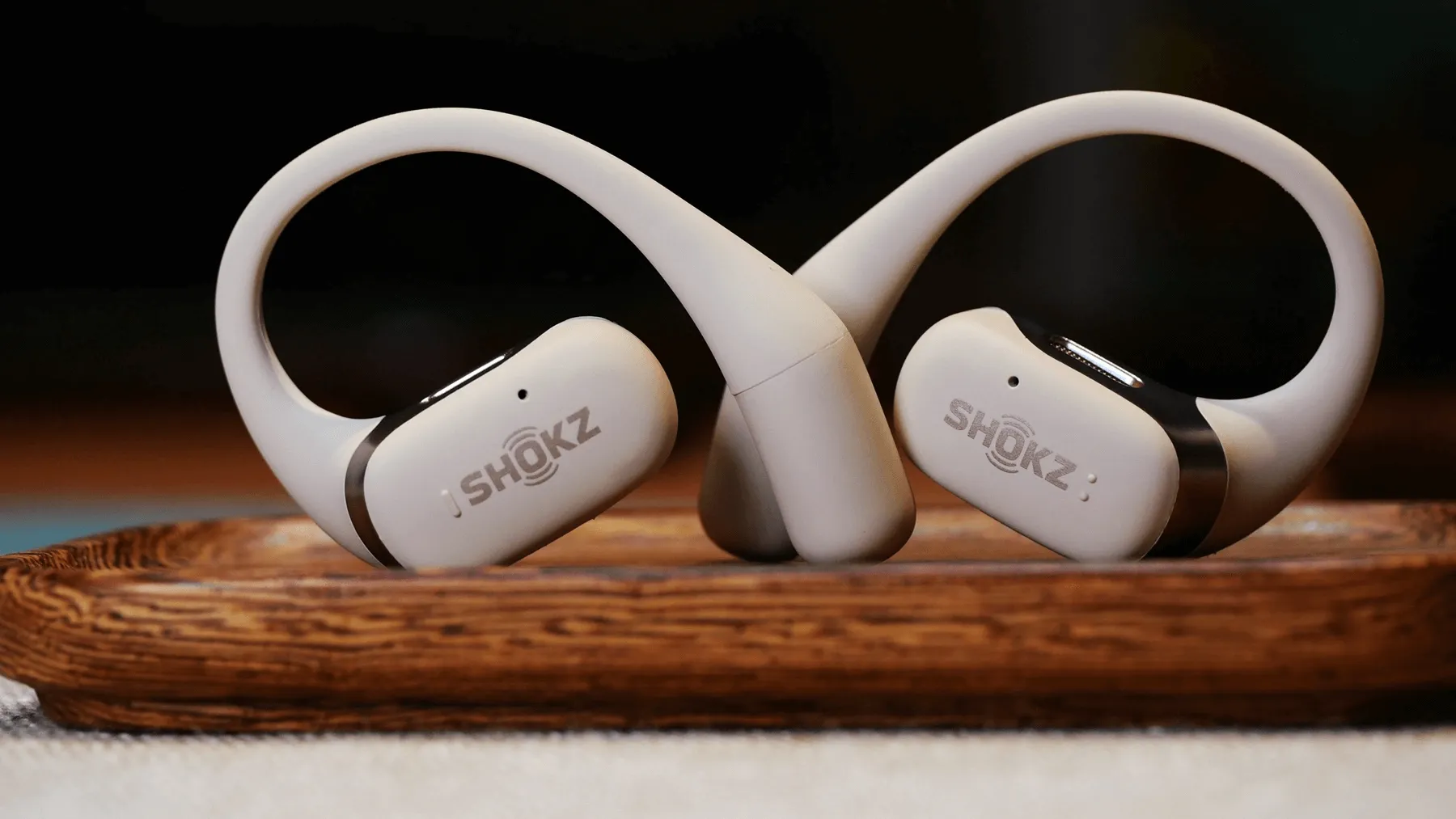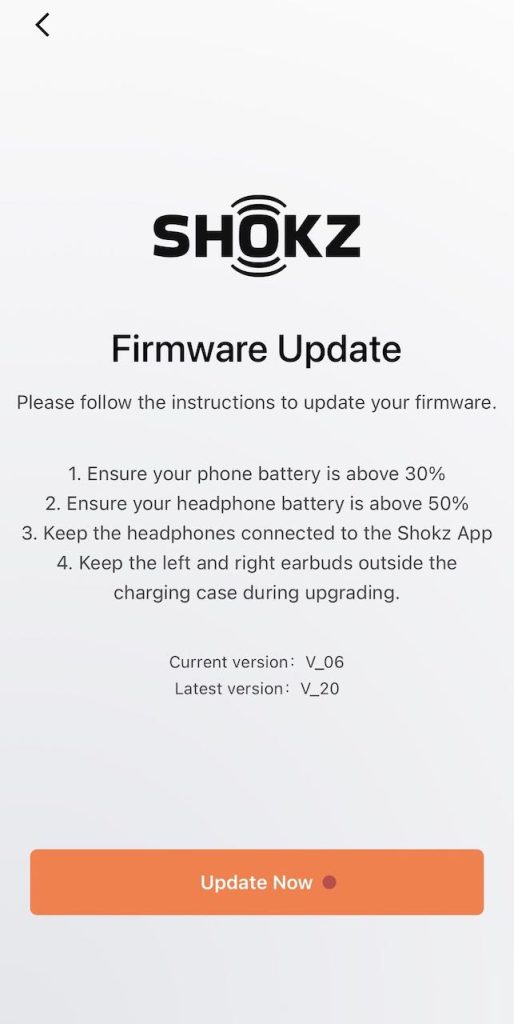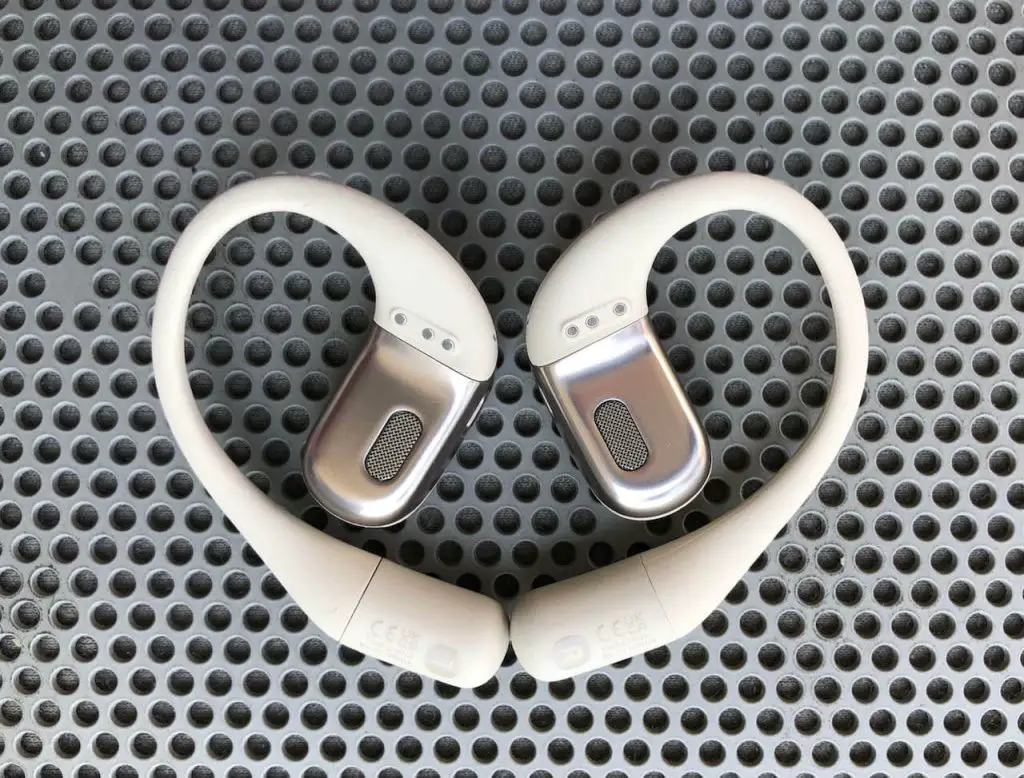Shokz is very well-known as being the pioneering company behind commercial bone-conduction headphones. It’s the industry in which Shokz made and earned its name, and bone conduction technology is nearly synonymous with the brand. But when Shokz launched the OpenFit, its first air conduction earphone, in April 2023—with a U.S. release following in June—people began to wonder: Is it really worth it?

Key Takeaways
Verdict: Shokz OpenFit earphones are great for general, everyday use. They aren’t ideal for audiophiles, and their water resistance rating is very low. Still, as Shokz’s first venture into air-conduction earphones, they offer decent sound quality, incredible comfort, and good environmental awareness.
Pros:
Cons:
| Preview | Product | |
|---|---|---|

|
SHOKZ OpenFit - Open-Ear True Wireless Bluetooth Headphones with Microphone, Earbuds with Earhooks,... | Check on Amazon |
These earphones are quite a significant change in direction for Shokz. It doesn’t mean the company will stop manufacturing bone conduction headphones; that is still its primary focus. But the OpenFit differs from other air conduction earphones, as I’ve found after spending some time with it. Let’s look at it more closely.
What Makes OpenFit Different?
The OpenFit uses traditional air conduction, not bone conduction, which makes it different from other Shokz headphones. But there are also a few aspects that make it different from other air conduction models.
Interested in understanding more about the differences between air and bone conduction? Check out Sound Showdown: Air vs. Bone Conduction Headphones
On first inspection, these earphones look much like competitor in-ear earphones, like Apple’s AirPods. But there’s one significant difference: they aren’t in-ear earphones. They do not block the ear canal at all; instead, they are suspended just over your outer ear.
This strikes a balance between in-ear and over-ear earphones, both of which obstruct the ear canal and lower your environmental awareness. With the not-in-ear design of the OpenFit earphones, Shokz is trying to create a “best of both worlds” solution, offering good quality sound without obstructing the ears and lowering environmental awareness.
This aspect makes OpenFit ideal for outdoor activities and commuting. As for how it stacks up against Shokz’s flagship bone conduction headphone, the OpenRun Pro, you can delve into the comparison in our OpenFit Vs. OpenRun Pro: The Sports Audio Debate.
Wearing And Comfort
Instead of Shokz’s traditional neck-hanging strap, the OpenFit features two unconnected earbuds with over-ear hooks. The hooks are made of skin-friendly silicone but contain titanium wires to help them maintain their shape so that you can twist them into the perfect fit around your ears.
The earphones look like they will be dangling a bit, but that is not the case. The over-ear hooks are sturdy enough that you can even go for a very energetic run without fear that they will come loose or fall off. They don’t fit as snugly as bone conduction headphones but won’t fall out easily. The wind can be a bit disruptive during a high-speed cycling session, though.

Each earphone weighs just 8.3g, and the hooks, made from a skin-friendly material known as zero-degree silicone, are so comfortable that I barely notice I’m wearing headphones. They are comfortable enough to use all day with no problems or difficulties, and best of all, they don’t add the discomfort and pressure of having something lodged in your ears.
A common concern is, will I be able to wear them with glasses or sunglasses? The answer is “yes”, just as with Shokz’s bone conduction headphones. Since most Shokz headphones are also intended to fit over the user’s ears, the company perfected the art of making its over-ear hooks stable without compromising comfort. I had no issues wearing them with my sunglasses.
The Technical Aspects Of Shokz OpenFit
The OpenFit leads the pack in the Shokz lineup, boasting the highest Bluetooth 5.2 version. It means you should have no difficulty connecting to most of the devices in your home, except for really old devices.
Unfortunately, the earphones don’t support Bluetooth Multipoint Pairing, which is a strange decision since Shokz’s other headphones support it. This will make it more challenging to switch between devices.
Update: The OpenFit, in its current shipped state, as it is initially shipped to customers, does not come with the Bluetooth Multipoint Pairing feature. This might seem confusing given that other headphones from Shokz do support this functionality. However, it is important to note that this feature can be enabled on the OpenFit through a firmware update. You will need to manually update the firmware to the latest version, V_20 or later, using the latest Shokz App. Once this update is completed, the Multipoint Pairing feature will be available, allowing you to effortlessly connect and switch your headphones to two devices simultaneously.

The earphones are equipped with built-in microphones featuring AI noise reduction. This technology enhances call quality by using algorithms to focus on the caller’s voice. This is combined with the microphone’s optimized built-in position for better sound reception, thereby reducing ambient noise and any echoes it picks up while maintaining a clear human voice.
OpenFit comes with an IP54 rating, which is much lower than most other Shokz products. It means that even a bit too much sweat can damage the earphones, so it’s best not to use them for any exercise that’s too strenuous. Jogging should be safe for the most part, but when you notice that you’re starting to sweat too much, it’s best to take the earphones off.
Sound Quality
The OpenFit’s sound quality is surprisingly good. Because it’s air conduction, it doesn’t suffer too much from the issues that plague bone conduction headphones. The earphones have excellent bass response thanks to Shokz’s proprietary OpenBass technology, though it’s not entirely on par with other premium earphones like the AirPods Pro.
On the downside, one problem remains from the bone conduction technology: the volume. Because these earphones don’t block your ears, they don’t seem to be loud enough. I found that I had to increase the volume considerably when I was listening to podcasts in a noisy environment like public transport or the gym.

Unfortunately, this also means that sound leakage can be an issue. However, OpenFit utilizes Shokz’s patented DirectPitch, a directional sound field technology that considerably limits sound leakage. Even at 50% volume, I found that people close to me could barely hear any sound coming from my earphones.
One significant drawback of the Shokz OpenFit was the noticeable latency issue when watching videos or playing games, causing the audio to desynchronize with the visuals. Shokz may potentially rectify this in a future firmware update. (Update: Bingo, they did just that! After a new firmware update (V_20 or later), the desynchronization latency has been significantly reduced.) However, rest assured, you won’t encounter this problem while listening to music or podcasts.
Battery Life And Charging
According to Shokz, the OpenFit earphones should run for approximately 7 hours when listening at 50% volume, which seems entirely accurate. If you aren’t in noisy areas requiring you to raise the volume level too much, you should be able to get through an average workday without recharging your earphones.
That being said, the charging case offers a combined battery life of approximately 28 hours, and the OpenFit’s fast-charging capabilities mean that just 5 minutes of charging will give you one extra hour of listening time. This is quite good and on par with most of the competition.
Controls
The Shokz OpenFit functions similarly to TWS earbuds, with a touch control area for operations. But it’s missing one thing – built-in volume controls. You’ve got to adjust the volume manually on your phone or other paired Bluetooth device. A swift double tap on either earphone can play or pause music, or answer or end a call, while a longer press rejects a call. To rewind or advance tracks, you’ll need to hold for three seconds on the left or right earphone respectively. However, these extended hold controls could be challenging during outdoor activities like cycling.
Additionally, the touch sensitivity might need some improvement. It seems to demand a certain amount of force and accurate targeting of the raised markers (a rectangle on the left side, and two dots on the right) within the circular touch area for effective response.
Related: How to Make Shokz Louder: Volume Boosting Techniques

| Preview | Product | |
|---|---|---|

|
SHOKZ OpenFit - Open-Ear True Wireless Bluetooth Headphones with Microphone, Earbuds with Earhooks,... | Check on Amazon |
Shokz OpenFit Review Recap
Though Shokz’s target market is sports fanatics, the OpenFit may be less than ideal for some. The low water resistance rating means that too much sweat could damage the device, and the fidgety controls aren’t easy to use while running or cycling.
However, as a pair of earphones for everyday use, the OpenFit is an excellent addition to the Shokz lineup. The not-in-ear technology is impressive, and we can only hope that Shokz makes even more use of it in the future.
